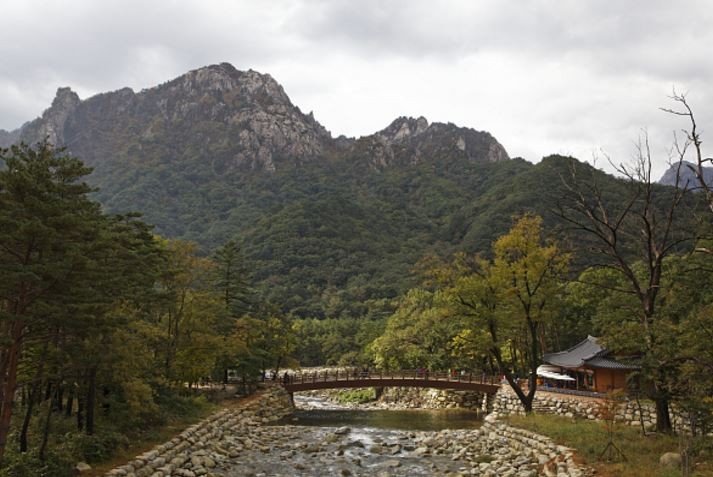Southern Part of Mt. Seorak Now Open to the Public

On October 1, the Mangyeongdae in the southern part of Mt. Seorak, was opened to the public for the first time in 46 years.
An article from the Korea JoongAng Daily mentioned that Mangyeongdae, or translated as "a spot where one can see ten thousand grand views," has been restricted to the public for decades in hopes of preserving the natural environment.
The author of the article described the scenery awaiting the people who visit the site. The author wrote, "After entering the southern part of Mt. Seorak's the Mangyeongdaw, the peaks appear as if painted on an unrolled folding screen. Formed by strange rocks and bizarre stones, the scenery looks like an imposing oriental painting. Visitors can enjoy all shapes and forms of Mt. Seorak's scenery from the Mangyeongdae, located at an altitude of 560 meters (1,837 feet)."
The Korea National Park Service (KNPS) installed a safety fence and an observatory deck made of wood which also has informative signs to further give details regarding the site.
KNPS' Jeong Chun Ho said, "Mt. Seorak has been designated as a national park since March 1970, so nobody has stepped foot on the Mangyeongdae for the last 46 years. KNPS is very glad to be able to share this beautiful scenery with so many people."
The author of the article also said that visiting the Jujeon valley will make you remember the folktale about the place. The author narrated, "Those who have heard the folktale with the backdrop of Jujeon valley will find the visit even more interesting. The story unfolds as a provincial governor of Gangwon passes near the valley and suddenly hears the sound of iron being tapped. Wondering where the sound comes from, the governor sent his servant to look for the place where the sound had come from. The servant discovered that a group of 10 people was making forged yeopjeon, old-fashioned Korean brass coins, inside a cave. The governor decided to punish those 10 people and also got rid of the cave. Since then, the place got the name Jujeon valley, as Ju stands for tempering a metal and Jeon represents money in Chinese characters."



